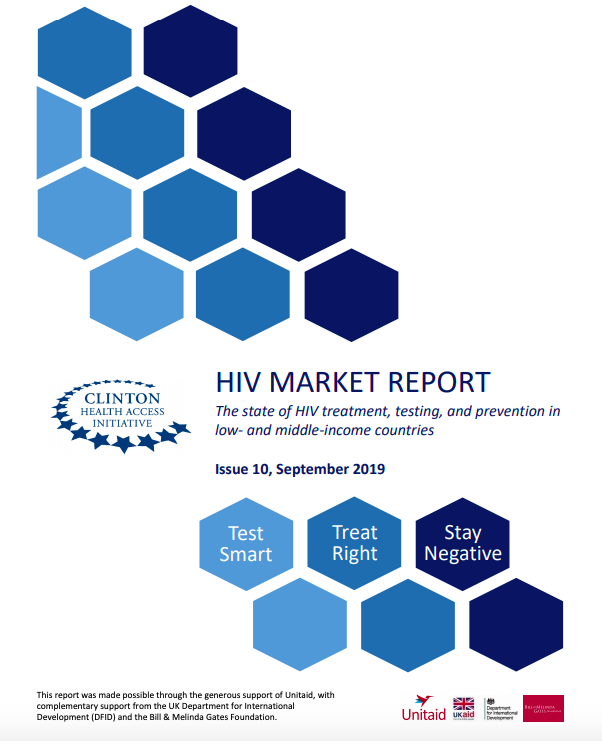CHAI is pleased to release the 10th issue of our annual HIV Market Report: The state of HIV treatment, testing, and prevention in low- and middle-income countries. The report provides a detailed look at the complex, ever-changing antiretroviral (ARV) and diagnostic markets in low- and middle-income countries based on aggregated market intelligence from our programmatic work in over 30 countries.
Download the 2019 HIV Market ReportThe first edition of CHAI’s HIV Market Report (then called the ARV Market Report) came out in 2010. When it was published, under 8 million patients were on antiretroviral therapy (ART) globally; a CD4 count below 350 cells/µL was the threshold for treatment initiation; stavudine (d4T) made up over 50 percent of the first-line treatment market in generic-accessible low- and middle-income countries; and dolutegravir (DTG) was yet to start the pivotal phase III SINGLE trial.
Much has changed since the first report. Over 23 million patients accessed ART globally in 2018, with nearly 2 million added between 2017 and 2018 alone. Almost all countries have implemented Treat All policies, and most country programs have entirely phased out d4T. DTG, an investigational drug in 2010, has changed the treatment landscape in countries around the world as national programs move to transition both first- and second-line patients to DTG-based regimens.
There is still more work to do. CHAI takes an integrated approach to improving access to HIV diagnostic, prevention, and treatment commodities, in order to eliminate HIV.
Countries must be smart and targeted about the way they test for HIV, provide the right treatment in the right way to those identified as positive, and provide cost-effective prevention options to those who are negative. All of this must be informed by robust use of data and a focus on individual, community, and country context. To realize the UNAIDS 90-90-90 targets, with the deadline now just a year away, the global HIV community will need to continue to break down siloes that exist within donors, implementing partners, and ministries of health. For example, screening and treatment for advanced HIV disease (AHD) and related co-infections is critical to reduce mortality and cannot be considered in isolation from CD4 testing systems that are essential to diagnosing patients with AHD in the first place. Better integration of HIV and sexual and reproductive health services will ensure that women are able to access essential health services during the same visit. The list of potential opportunities for integration goes on.
CHAI’s mission is to ensure rapid access to the best health products at affordable and sustainable prices for patients in resource-limited settings. CHAI supports partner governments in scaling up their HIV response by working toward high quality and cost-effective treatment, testing, and prevention for all people living with HIV/AIDS. On the supply side, CHAI aims to support a reliable and transparent marketplace for HIV drugs and diagnostics to ensure a sustainable supply of life-saving health commodities for patients.






